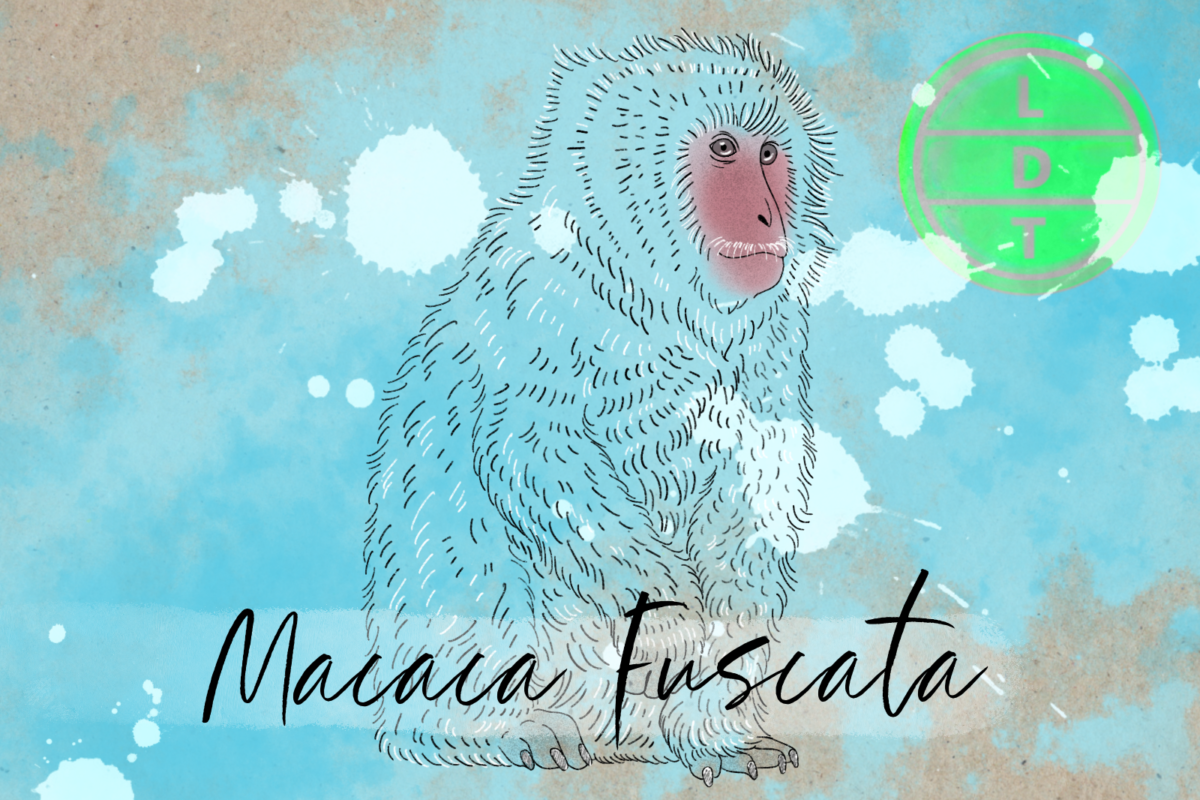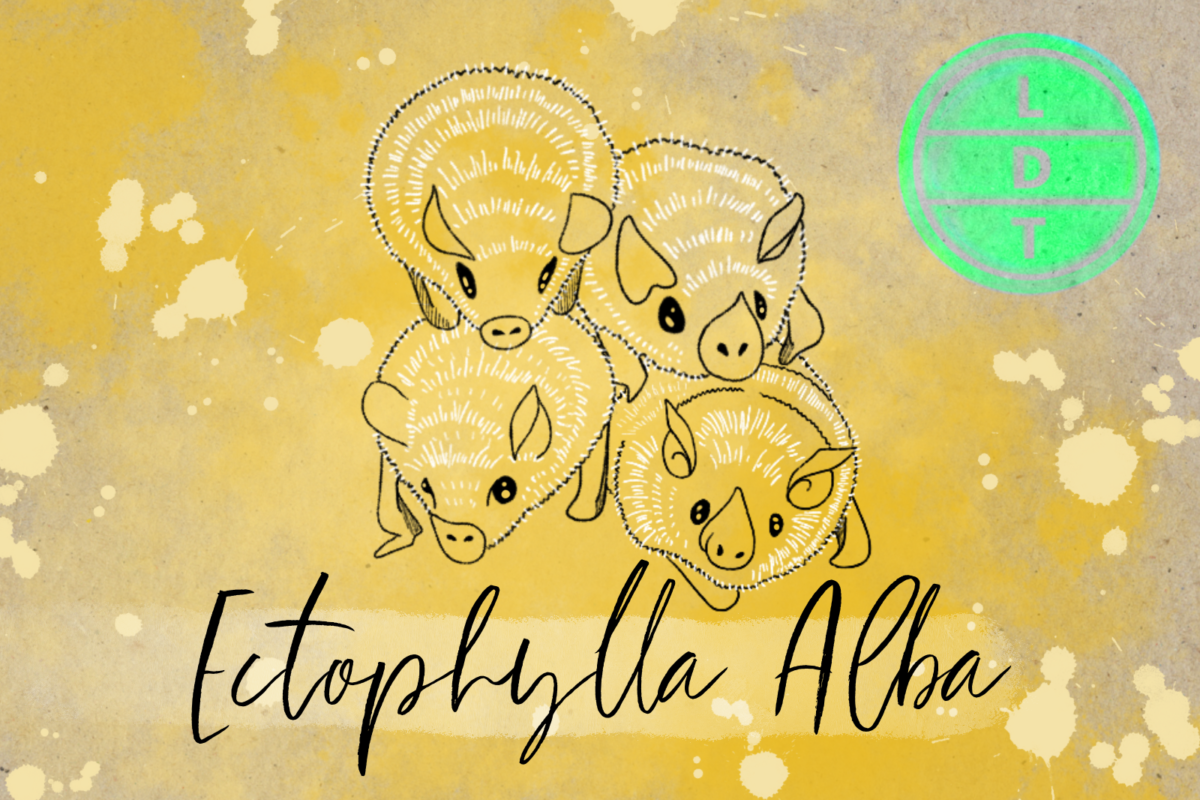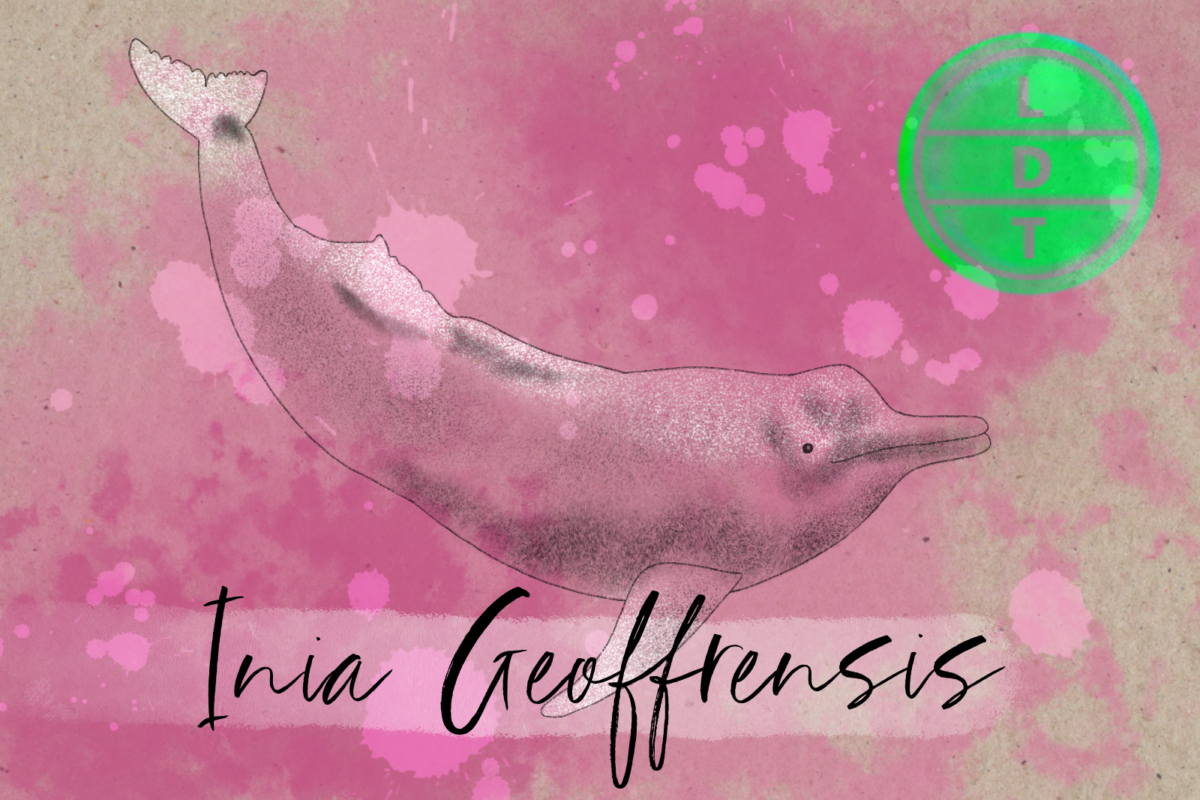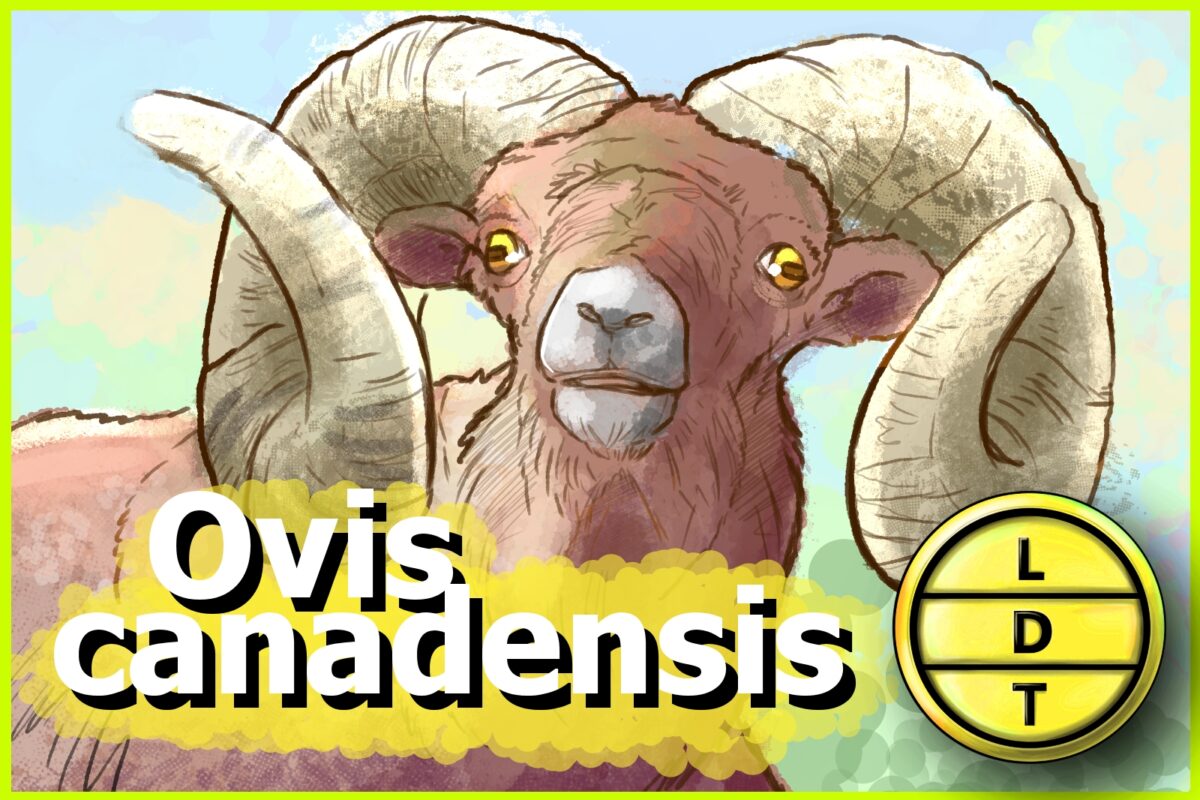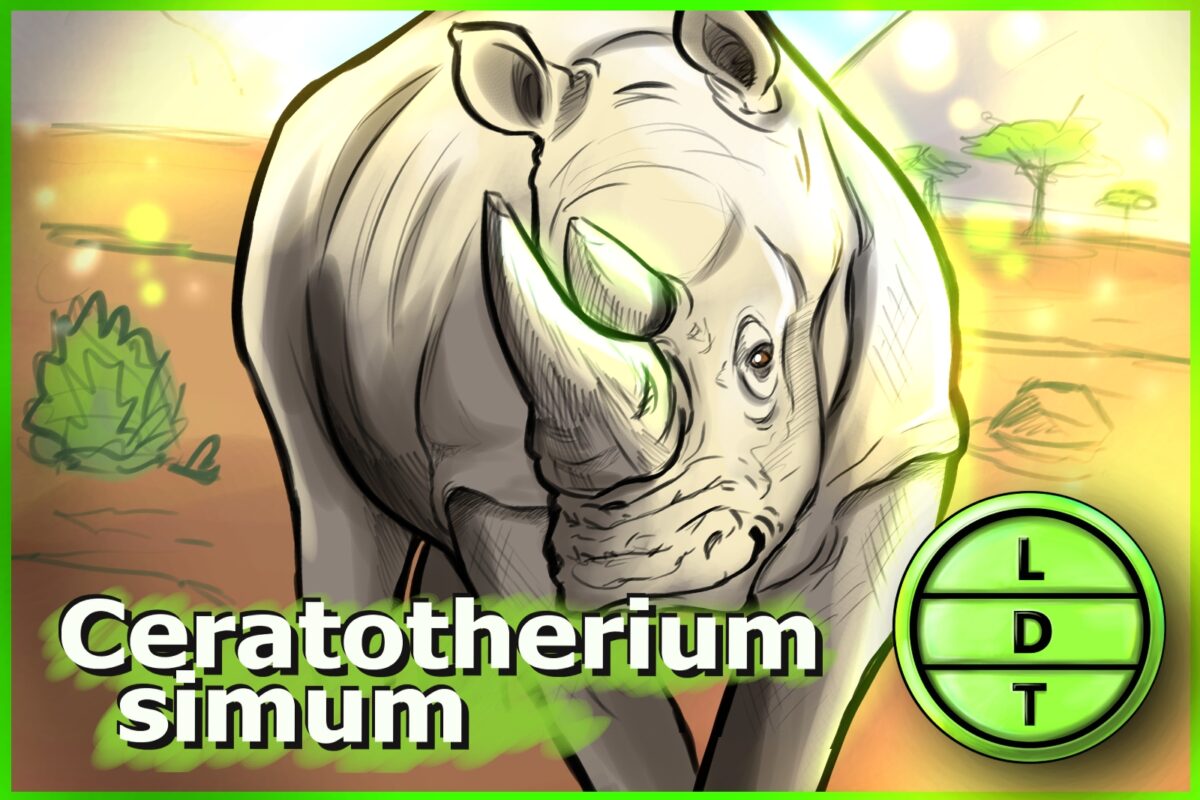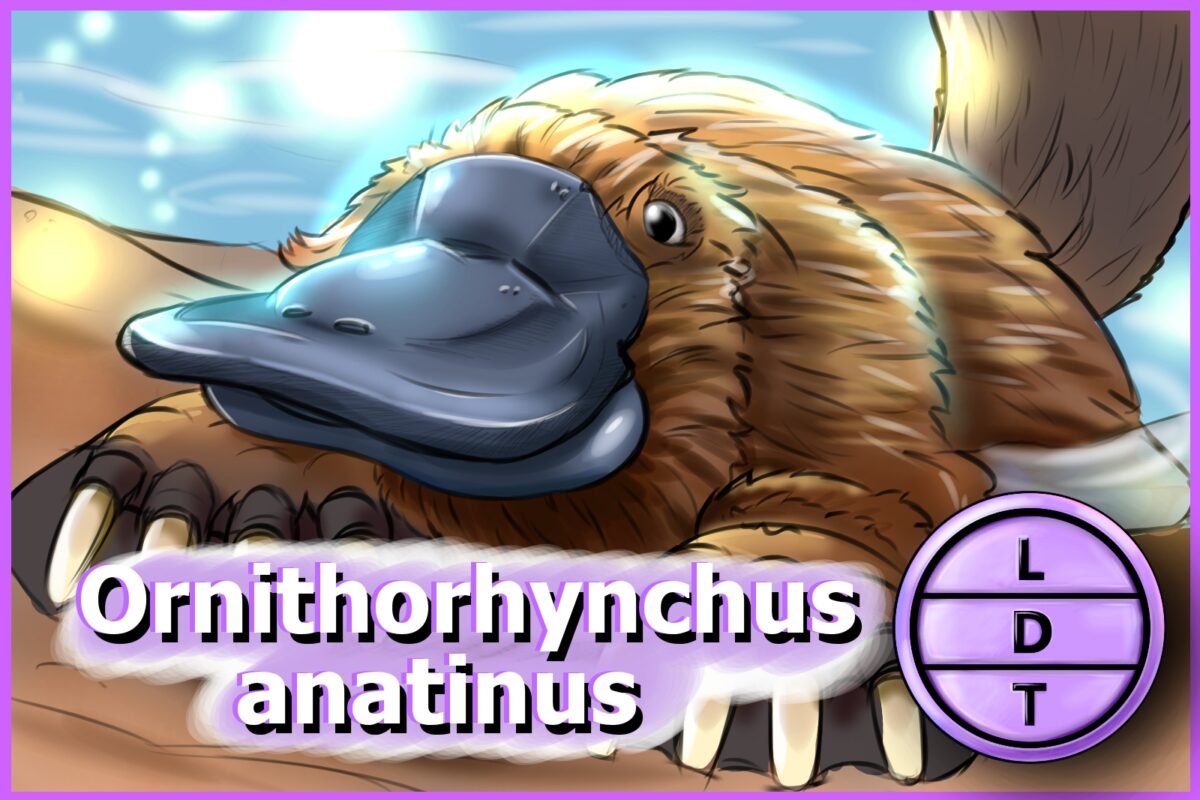“…and today we’re talking about the mountain lamb that the Lord provided. Literally, because it’s just a wild sheep.”
If you’re in America’s western snow capped regions and you hear a sudden crack that echoes through mountains, it might not be thunder. If that cracking continues at periodic intervals for close to an hour, you may be listening to a clash of titans. No, it’s not Greek deities battling atop Olympus. Its two rival sheep showing eachother what they’re made of in a test of strength and endurance. But sometimes victory means using your head in Life, Death, and Taxonomy.
Description
- They are classified as sheep (in the genus Ovis) but they look a lot like goats (from the genus Capra)
- Their wool/fur is short despite living in colder regions up north
- Their coats are brownish-grey with a streak of white on their tush, legs, and snoots
- Outside of that, the eponymous horns that the males have are large and curved, stemming from just above their eyes and swirling around their ears, coming to a sharp point alongside their snouts.
Measure Up
Welcome to the beloved Measure Up segment. The official listener’s favorite part of the show! The part of the show when we present the animal’s size and dimension in relatable terms through a quiz that’s fun for the whole family. It’s also the part of the show that’s introduced by you when you send in audio of yourself saying, singing, or chittering the words Measure Up into ldtaxonomy at gmail dot com. We don’t have a new Measure Up intro this week.
- Bighorn Sheep
- Pronghorn
- Impala
- Springbok
Male Length
- 1.6–1.85 m (63–73 in) long
- How many bighorns go into the height of Mount Elbert in Colorado?
- Hint: Mount Elbert is Colorado’s highest peak, and it’s the second highest peak in the US mainland. It’s second to Mount Whitney in California. It’s 14 overall with the rest of the highest peaks in Alaska.
- 2,373.6 sheep. The mountain is 14,440 ft (4401.2 m).
Male Weight
- 58–143 kg (128–315 lb)
- How many bighorns go to the combined weight of the largest gathering of people dressed in gorilla costumes, assuming every single one is the average American weight?
- Hint: Colorado holds this record for the Denver Gorilla Run 5k race, which was organized by the Mountain Gorilla Conservation Fund.
- 619 sheep. 1,061 recorded participants at an average of 184 pounds equalling 195,224 pounds.
Fast Facts about the Bighorn Sheep
- 3 different subspecies
- Rocky Mountain
- Sierra Nevada
- Desert
- Diet: Like all bovines, they graze on grasses and plants.
- Behavior:
- Predation:
- Coyotes, bobcats, foxes, wolverines, jaguars, ocelots, lynxes, eagles, bears, wolves, mountain lions
- They can easily catch pneumonia from asymptomatic domestic sheep and it can kill upwards of 90% of a population of bighorns
- When courting a potential mate, a ram will use one of three strategies to win fair lady’s heart:
- Tending: Following and defending a ewe
- Coursing: Fighting for a ewe that already has someone tending her
- Blocking: Stopping a ewe from going to places where tending rams are prowling
- There is an Apsaalooka (Crow) tribal legend that a man was rescued by a herd of bighorn sheep after his dad pushed him off a cliff. The man called himself Big Metal and became the leader of the sheep, who gave him supernatural strength, wisdom, sharp eyes and ears, and sure-footedness.
Major Fact: Thick Headed
Bighorns can deliver a headbutt at 35 mph with enough power to instantly kill a human being. The impact of two males butting heads can be heard from a mile away. In fact, the impact generated by two sparing bighorns is the most force created by any sheep species. It’s estimated that they can generate 3400 N of force in a single blow.
That’s around 764 pounds of force that bighorn sheep take for hours. Estimates suggest that it could take around 551 pounds of force to break a human skull. Sorry GoT fans, the Mountain couldn’t really do it, but mountaineering bighorn sheep could.
Bighorns have large thick horns on the top of their heads. These are distinct from antlers, which are 100% made of bone. Horns are certain that surround a boney core. Antlers usually fall off and regrow regularly, but bighorn horns stick around.
These horns connect directly to the skull and there’s a thick layer of skull at the base of each horn. This skull base also has holes in it in a honey-comb pattern. While that may sound like it makes them less durable, it actually allows their skull to absorb more impact than solid bone.
The proteins that form the keratin sheath grow faster on the outward forward facing edge, which is useful for creating extra padding in the impact zone, but it also gives the horn it’s signature curl. These horns can grow to be up to 40 pounds on a full grown male.
The closest things humans come to experiencing this is NFL football players. Big hits can potentially reach up to 970 pounds of force, spread over their entire bodies and mitigated by padding and falling over. Bighorn sheep do this hundreds of times in an afternoon with the force concentrated directly onto their heads with almost no give to mitigate the impact. Football players routinely experience concussions and other lifelong injures, but the bighorn can do this with no problems.
Ending: So stick together, keep an eye out for predators, and keep your head down when defending your territory like the bighorn sheep here in LDT.

